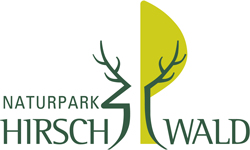The Nature Park Hirschwald
The Nature Park Hirschwald, which covers an area of about 280 km² (108 sq. miles), owes its attractiveness to its variety of scenery. Smooth valleys or pastured plateaus, deep forests or open countryside, steep rock formations or gentle meadows - they are all part of the lasting impression that Hirschwald makes on every visitor. Furthermore, they constitute a perfect wildlife habitat for many endangered species.
19 different bat species live in the area around Hohenburg, for example. One of these species is the Greater Horseshoe Bat, which is on the list of endangered bat species in Europe. These nocturnal hunters roost in caves, forests or in the rafters of churches and other old buildings.
In the valley of the river Lauterach, a nearly Mediterranean climate dominates the south-facing hillsides from Kastl to Schmidmühlen. The local vegetation has adapted to this climate and has an almost Tuscan look to it. Wild orchids bloom colourfully between the spicy smell of juniper bushes standing like columns, and yellow stonecrop clings to the bright white limestone. Burnt orchids, pasque flowers and gentians flourish here as well. But apart from all these flowers, other rare species live here, too, for example many species of butterflies and lacewings. The Great Banded Grayling, owlflies and antlions are more common in the Vils- and Lauterach valleys than anywhere else in Bavaria.
In the Vils and Lauterach valleys you can watch kingfishers hunting for their prey, and white-throated dippers diving for caddisfly larvae under the water surface. In the clean, oxygen-rich water you can also spot trout in the gentle current and crayfish crawling under stones while dazzling dragonflies buzz from waterside to waterside.







